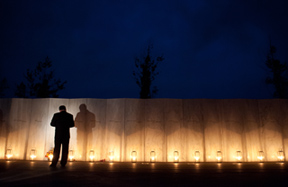
A little more than a year ago, when I did an article on the successful second-act governorship of Jerry Brown, I said that among his major ambitions for the state was to create a north-south High-Speed Rail project, or HSR.
There wasn't space to go into it at the time, but I was a fan of the project then, and have become more so as time has gone on, even as political controversy about it has mounted. Reasons for my initial pro-HSR outlook:

• If you have lived any place where HSR is up and running, you see the difference it can make. China’s high speed rail has its flaws, like crashing. But a relatively quick rail connection between Shanghai and Beijing is miraculous. So too with Xiamen-Shenzhen — or Tokyo-Osaka in Japan, or all the ones in Europe I have heard about but not yet taken.
• If you have lived or worked any place in America with even medium-speed rail service, you see the difference it has made. Amtrak also has its flaws, to put it mildly. But just imagine life along the Bos-Wash corridor without it.

• If you even start to think what already-congested, still-growing California will be like without some alternative to increased reliance on cars and airlines, you get depressed. It’s not just the congestion — at LAX, SFO, 101, and “the 405” and all other freeways of the Southland (where freeway names begin with "the"–and where, for the record, I grew up and still consider myself "from"). It’s the doomed choice between building more roads, thus chewing up more land while ensuring that the new roads clog up soon, and not building more, thus ensuring even worse Beijing-style paralysis.
• Plus, infrastructure! Of the right kind. You can think of big transport investments that didn’t pay off, especially if you start by thinking of Robert Moses. You can more easily think of ones that defined countries, eras, economies. For your old-world types, you have the Silk Road or the Via Appia. For the Japanese, the ancient Tōkaidō, or “Eastern Sea Way,” immortalized by Hiroshige, and the modern Shinkansen that covers much the same route. We Americans have the Erie Canal ...

... and the “National Road,” the transcontinental railroads, the early U.S. expansion of an air-travel infrastructure, the Interstate Highways, the Bay Bridge and the Golden Gate, the international effects of the Panama Canal, plus others. History’s record suggests that big investments of this sort are more often a good than a bad idea. It's because of the central historic role of transport-infrastructure projects in shaping the growth of states, regions, and whole countries that I've made this post part of the American Futures series.

***
That was my pro-HSR starting position. As I've read and interviewed over the past year, including on reporting trips to California's Central Valley, I've become more strongly in favor of the plan, and supportive of the Brown Administration's determination to stick with it. In installments to come I'll spell out further pros and cons of the effort, and why the pros seem more compelling. For the meantime, here are three analyses worth a serious read:
• An economic impact analysis prepared by the Parsons Brinckerhoff firm for the High-Speed Rail Authority two years ago, which looked into likely effects on regional development, sprawl, commuting times, pollution, and so on.
• An analysis by law school teams from UCLA and Berkeley, which concentrated on the project's effects in the poorest and most polluted part of the state, the central San Joaquin Valley.
• A benefit-cost analysis by Cambridge Systematics, of the "net present value" of a California high-speed rail system. (NPV is a standard way of comparing long-term costs and benefits.) It had charts like these on the likely longer-term benefits of the project, and said that the costs would be significantly less.

More on those arguments later on. While I'm at it, here is the site of the U.S. pro-HSR association, and here is the one for California's High-Speed Rail Authority.
- 1
- 2
- Single Page































 In Focus
In Focus






